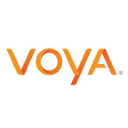/ factorpad.com / stocks / f12frq.html
An ad-free and cookie-free website.
Our quantitative data points are meant to provide a high-level understanding of factors in equity risk models for Voya Financial Inc. Portfolio managers use these models to forecast risk, optimize portfolios and review performance.
We show how VOYA stock compares to 2,000+ US-based stocks, and to peers in the Finance and Insurance sector and All Other Insurance Related Activities industry.
Please do not consider this data as investment advice. Data is downloaded from sources we deem reliable, but errors may occur.
 Voya Financial, Inc. helps Americans plan, invest and protect their savings - to get ready to retire better. Serving the financial needs of approximately 14.8 million individual customers, workplace participants and institutions in the United States, Voya is a Fortune 500 company that had $7.6 billion in revenue in 2020. The company had $700 billion in total assets under management and administration as of Dec. 31, 2020. With a clear mission to make a secure financial future possible - one person, one family, one institution at a time - Voya's vision is to be America's Retirement Company®. Certified as a 'Great Place to Work' by the Great Place to Work® Institute, Voya is equally committed to conducting business in a way that is socially, environmentally, economically and ethically responsible. Voya has earned recognition as one of the World's Most Ethical Companies® by the Ethisphere Institute; as the No. 1-ranked financial services firm among Barron's 100 Most Sustainable Companies for three consecutive years; as a member of the Bloomberg Gender Equality Index; and as a 'Best Place to Work for Disability Inclusion' on the Disability Equality Index.
Voya Financial, Inc. helps Americans plan, invest and protect their savings - to get ready to retire better. Serving the financial needs of approximately 14.8 million individual customers, workplace participants and institutions in the United States, Voya is a Fortune 500 company that had $7.6 billion in revenue in 2020. The company had $700 billion in total assets under management and administration as of Dec. 31, 2020. With a clear mission to make a secure financial future possible - one person, one family, one institution at a time - Voya's vision is to be America's Retirement Company®. Certified as a 'Great Place to Work' by the Great Place to Work® Institute, Voya is equally committed to conducting business in a way that is socially, environmentally, economically and ethically responsible. Voya has earned recognition as one of the World's Most Ethical Companies® by the Ethisphere Institute; as the No. 1-ranked financial services firm among Barron's 100 Most Sustainable Companies for three consecutive years; as a member of the Bloomberg Gender Equality Index; and as a 'Best Place to Work for Disability Inclusion' on the Disability Equality Index.
Many of the following risk metrics are standardized and transformed into quantitative factors in institutional-level risk models.
Rankings below represent percentiles from 1 to 100, with 1 being the lowest rating of risk.
Stocks with higher beta exhibit higher sensitivity to the ups and downs in the market. (↑↑)
Stocks with higher market capitalization often have lower risk. (↑↓)
Higher average daily dollar volume over the past 30 days implies lower liquidity risk. (↑↓)
Higher price momentum stocks, aka recent winners, equate to lower risk for many investors. (↑↓)
Style risk factors often include measures of profitability and payout levels.
Companies with higher earnings generally provide lower risk. (↑↓)
Companies with higher dividend yields, if sustaintable, are perceived to have lower risk. (↑↓)
/ factorpad.com / stocks / f12frq.html
A newly-updated free resource. Connect and refer a friend today.